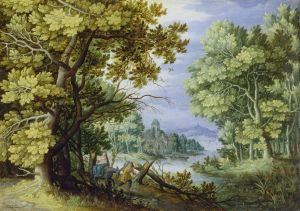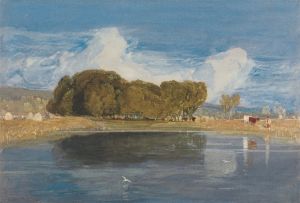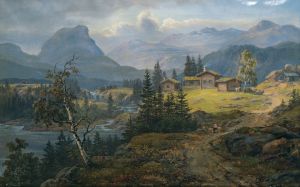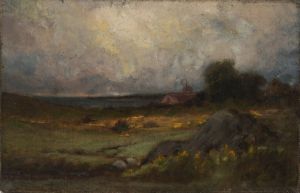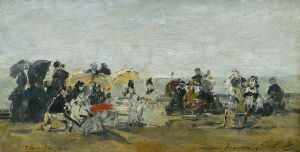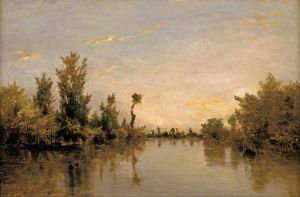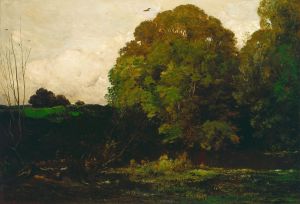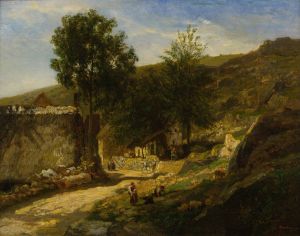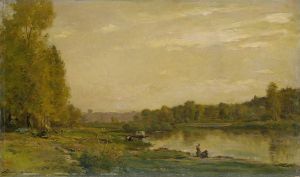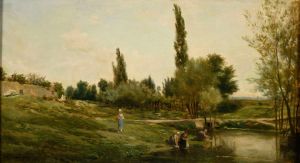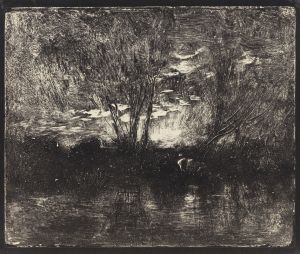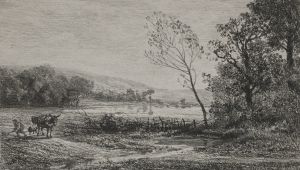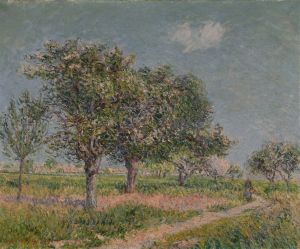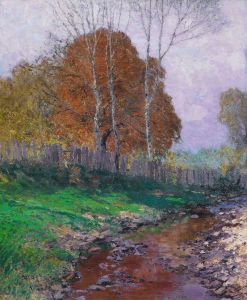
Paysage
A hand-painted replica of Charles François Daubigny’s masterpiece Paysage, meticulously crafted by professional artists to capture the true essence of the original. Each piece is created with museum-quality canvas and rare mineral pigments, carefully painted by experienced artists with delicate brushstrokes and rich, layered colors to perfectly recreate the texture of the original artwork. Unlike machine-printed reproductions, this hand-painted version brings the painting to life, infused with the artist’s emotions and skill in every stroke. Whether for personal collection or home decoration, it instantly elevates the artistic atmosphere of any space.
Charles-François Daubigny (1817–1878) was a prominent French landscape painter associated with the Barbizon School, a group of artists who sought to depict nature realistically and worked outside the confines of academic traditions. One of his notable works, Paysage (translated as "Landscape"), exemplifies his dedication to capturing the natural world with a sense of immediacy and authenticity.
Daubigny was known for his innovative approach to landscape painting, often working en plein air (outdoors) to directly observe and render the effects of light, atmosphere, and the changing seasons. This method allowed him to create works that were both spontaneous and deeply rooted in the natural environment. Paysage reflects these qualities, showcasing his ability to blend detailed observation with a poetic sensibility.
The painting likely features a rural scene, as Daubigny often drew inspiration from the French countryside, particularly the regions along the Seine and Oise rivers. His compositions frequently include elements such as rivers, trees, and open skies, rendered with a soft, harmonious palette. Daubigny's brushwork in Paysage is characteristic of his style—loose and fluid, yet precise enough to convey the textures and forms of the landscape.
Daubigny’s work, including Paysage, had a significant influence on the development of Impressionism. Younger artists such as Claude Monet and Camille Pissarro admired his approach to painting outdoors and his focus on capturing transient effects of light and weather. Daubigny’s use of a boat as a floating studio, which allowed him to paint directly on the water, was particularly innovative and inspired Monet’s later work.
While specific details about the creation date or exact location depicted in Paysage are not readily available, the painting is representative of Daubigny’s broader oeuvre and his commitment to portraying nature with sincerity and emotion. His works are housed in major museums and collections worldwide, reflecting his enduring legacy as a pioneer of modern landscape painting.
Daubigny’s contributions to art history lie not only in his technical skill but also in his role as a bridge between the Barbizon School and the Impressionist movement. Paysage serves as a testament to his ability to capture the beauty and tranquility of the natural world, leaving a lasting impression on viewers and fellow artists alike.





